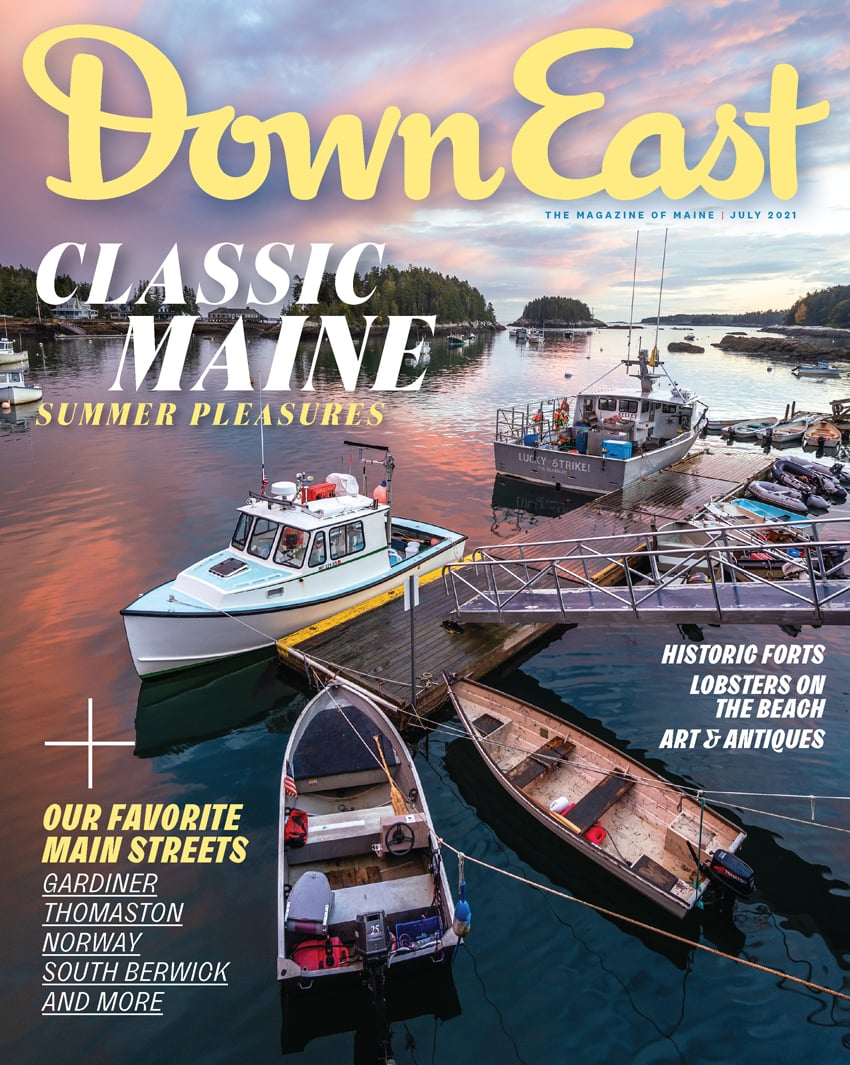By Will Grunewald
When 88-year-old artist David Driskell passed away last year from the coronavirus, he left behind a singular artistic legacy. His painting and printmaking bucked genres, shifted between representation and abstraction, and incorporated a diverse set of influences — and Maine was a frequent and conspicuous presence in his work. Driskell also left behind the late-stages planning for the first major exhibition of his work, David Driskell: Icons of Nature and History. Driskell’s pieces had appeared in countless significant shows at museums around the world, but never had a sufficient number been brought together to do justice to the full breadth of his career.

The exhibition is a joint initiative of the Portland Museum of Art and Atlanta’s High Museum of Art, and the two institutions reflect different reference points in Driskell’s life and work. “David was a Southerner — he felt strong connections to the Black church in the South,” PMA chief curator Shalini Le Gall says. “At the same time, he was right at home in Maine. Pine trees, especially, were a source of endless creativity for him. So this lets us think about the ways a single artist drew from multiple geographic locales for artistic energy.”
Driskell was born in Georgia and raised in rural North Carolina. His connection to the High Museum dates to the 1950s, soon after his graduation from Howard, the historically Black university in Washington, DC. As an assistant professor at Talladega College, in Alabama, Driskell would travel the 100 miles into Atlanta to visit the museum, though only when permitted, on “colored-only days.” Today, the museum awards an annual prize in his name to up-and-coming Black artists, scholars, and curators.
David Driskell first visited Maine to attend the Skowhegan School of Painting & Sculpture, in the summer of 1953. Then, in 1961, he bought a small cottage in Falmouth, and though he spent much of his adult life based in Maryland, he headed up the coast to work from Maine during the summers. Driskell also taught, curated, and painted around the country, becoming not just a prominent Black artist but also a leading scholar and supporter of Black art. “He was really a force for driving the entire art world to recognize what had been overlooked,” Le Gall says. “Any art historian or curator will know, for instance, the incredible exhibition he curated in 1976, Two Centuries of Black American Art.” After that show debuted at the Los Angeles County Museum of Art, it appeared at, among other venues, the High Museum, becoming the first major traveling exhibition to focus on the history and creative output of Black American artists.


Prior to his death, Driskell had been consulting with the curators of Icons of Nature and History, which debuted at the High Museum in February and moved to the PMA in June. The 60 selected works span the whole of Driskell’s career, from the 1950s into the 2010s, and they reveal an evolution of themes and styles through self-portraits, city scenes, pine trees, and more.
“Nature” and “history,” Le Gall points out, weren’t separate threads for Driskell — in his mind, Maine’s beauty intermingled with other influences from his life. Consider, she says, the renowned Behold Thy Son, motivated by the 1955 lynching of Emmett Till. It shows the gaunt body of a Black man posed as to evoke the Crucifixion, held in the arms of the Virgin Mary. “One of David’s preparatory sketches for the piece,” Le Gall says, “is full of all this lush greenery — he was still thinking in ways that are very natural and organic. I think that sketch helps show how nature and history spoke to each other constantly in his art making.”



Le Gall hopes that Maine viewers come away with a strong sense of Driskell’s place within Maine art history. “He gave so much time to engaging with people here,” she says. “He established deep roots and connections. But he’s also an artist who brought Maine to a wider national and international conversation. I’m not sure how known that is. And what it meant for a Black artist from the South to come here in 1953 and really grasp what this state could do for creativity — it’s pretty incredible.”
“This is a wonderful exhibition,” Le Gall adds, “but with David not here to see it, it’s also bittersweet.”
David Driskell: Icons of Nature and History is on view now at the Portland Museum of Art through September 12. 7 Congress Sq., Portland. 207-775-6148.




